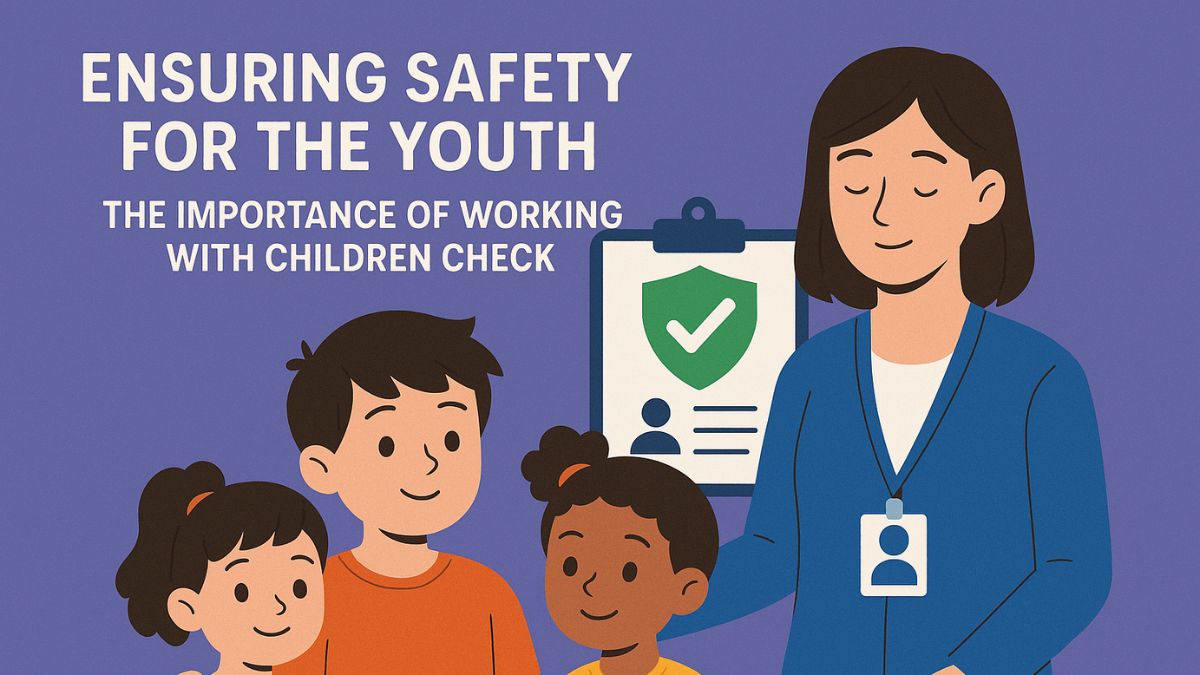Child safety is a critical issue that transcends all aspects of society. Whether in education, healthcare, sports coaching, or any other field involving minors, ensuring the well-being of children is paramount. This is the driving force behind stringent measures such as the Working With Children Check (WWCC). Such a certification plays a pivotal role in safeguarding children from potential harm and provides peace of mind for parents and the community at large.
The Fundamental Role of Child Safety Certification
Child safety certification serves as a vetting process for individuals whose work or volunteer roles involve direct or indirect contact with children. It is designed to prevent those who pose a risk to children’s safety from engaging in occupations where they have access to young and vulnerable individuals. This rigorous step ensures that only those cleared of any concerning past behaviours or criminal activities are allowed to work with children.
Strategies to Protect Minors in Various Sectors
No sector is exempt from the potential risks that arise when adults interact with children. In schools, teachers and support staff are required to possess a valid WWCC to ensure that they are fit and proper individuals to conduct such an important role in a child’s life. Similarly, health professionals who provide care for minors and sports coaches who influence young athletes must also undergo similar checks to certify their suitability for the role.
The implications of child safety extend beyond the obvious professions, including individuals who work in children’s entertainment, religious instruction, and even transport services catering to minors. In essence, the WWCC acts as a firewall against the possibility of child exploitation and abuse, ensuring that all facets where children are involved are closely monitored and regulated.
Increasing Public Confidence through Certification
Public confidence in organisations catering to youth is significantly heightened when there is a transparent safety certification process in place. Parents and guardians are assured that rigorous background and character checks have been conducted on those involved with their children. This not only fosters trust in these organisations but also in the broader community as it underscores a collective commitment to child safety.
The Working With Children Check: A Closer Look
The Working With Children Check is a thorough screening procedure mandated by law in many regions. It evaluates the potential risk an individual may pose by examining their criminal history, any allegations or findings of misconduct, as well as other relevant information. This examination is not a cursory glance but a continuous process, with ongoing monitoring that alerts authorities in the event of new relevant offences committed by the individual.
This process ensures that the screening remains effective and current, thus preserving the safety of children as a continuous priority. Organisations are now legally obliged to require a WWCC for eligible roles, reinforcing the standard of care and due diligence exercised in the protection of children.
The Impact of WWCC on Volunteerism and Employment
While some may argue that rigorous checks could deter individuals from pursuing roles involving work with children, the broader societal agreement is that child safety should never be compromised. WWCCs have become a standard part of the recruitment process, serving as a necessary step in the pathway to employment or volunteerism in child-related work. These checks are often recognised as a quality standard, giving those who pass them an additional assurance to present to parents and employers.
Adapting to a Culture of Safety
Adoption of the WWCC and similar certifications has led to a culture shift where child safety is ingrained as a core value in the society. It encourages organisations and individuals to prioritise the safety and welfare of children above all else and fosters a proactive approach in identifying and mitigating risks.
Therefore, such checks not only filter out inappropriate candidates but also propel a proactive culture of child safeguarding among those who do work with children. It becomes a shared responsibility and a collective badge of honour to hold such a certification, highlighting the individual’s and organisation’s commitment to safe practices.
Conclusion
Child safety is an area of no compromise, where the highest standards must be maintained. The Working With Children Check stands as an integral part of the system designed to protect the most vulnerable members of society. It balances the right of children to be safe with the need for qualified, caring adults to support their growth and development.
The WWCC is not just about filtering out harmful individuals; it’s about creating an environment of trust and safety that allows children to thrive. As an ongoing process, it ensures that this trusted environment evolves and responds to changes, maintaining the shield that safeguards our youth across various spectrums.
In summary, the significance of the WWCC cannot be understated. It is an essential element in the protection of our children and, by extension, the future of our community. Child safety certification reassures parents, empowers organisations, and protects society’s most precious asset its children.











